
Column文化遺産コラム
International Cooperation with Bahrain — The Land of Pearls, Oil and Burial Mounds (II): Archaeological Investigation by a Japanese Team and Its Discoveries
17.06.2019
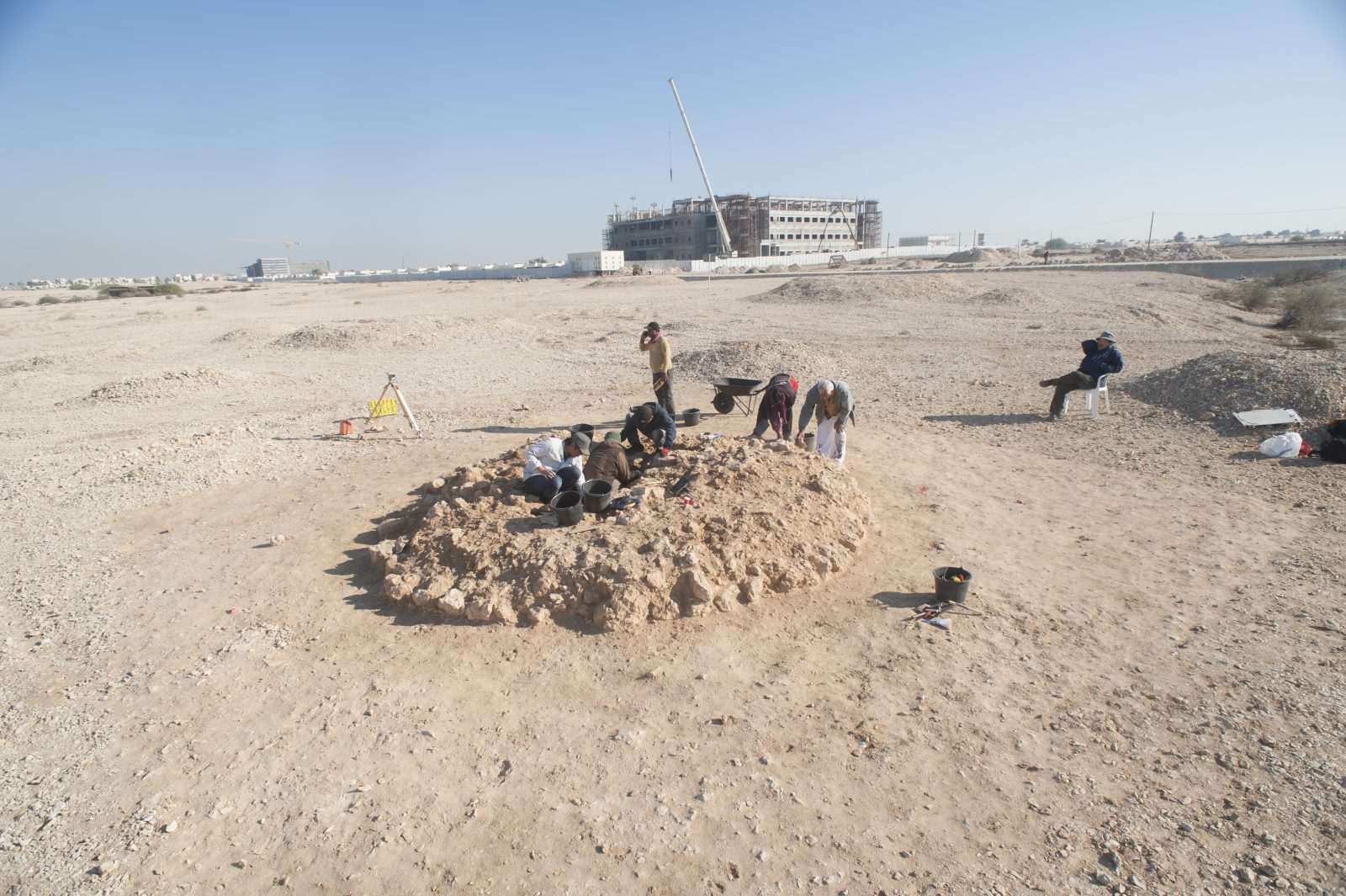
Author Masashi Abe
Researcher Japan Center for International Cooperation in Conservation Tokyo National Research Institute for Cultural Properties
The Japanese team has been engaging in the archaeological investigation of Bahrain's oldest burial mounds in Wadi as-Sail, of which construction started in this period around 2200 BCE, to elucidate where the founders of Dilmun came from
-
Archaeological Investigation by a Japanese Team in Bahrain
In the needs assessment survey for international cooperation conducted in 2011, the Bahrain Ministry of Culture wished one more thing: they requested an archaeological excavation of Dilmun burial mounds be conducted by a Japanese team.
Archaeological excavations are very important also to increase the attractiveness of the burial mounds as well for high quality museum exhibits.
Thus, we organized a new excavation team in 2014 and started an archaeological investigation of Dilmun burial mounds.※
In addition to engaging in excavation, we also work vigorously to inform the public including the Bahraini people and the Japanese residents of Bahrain, holding onsite briefings and lecture sessions, or going out to schools to give special classes.
-
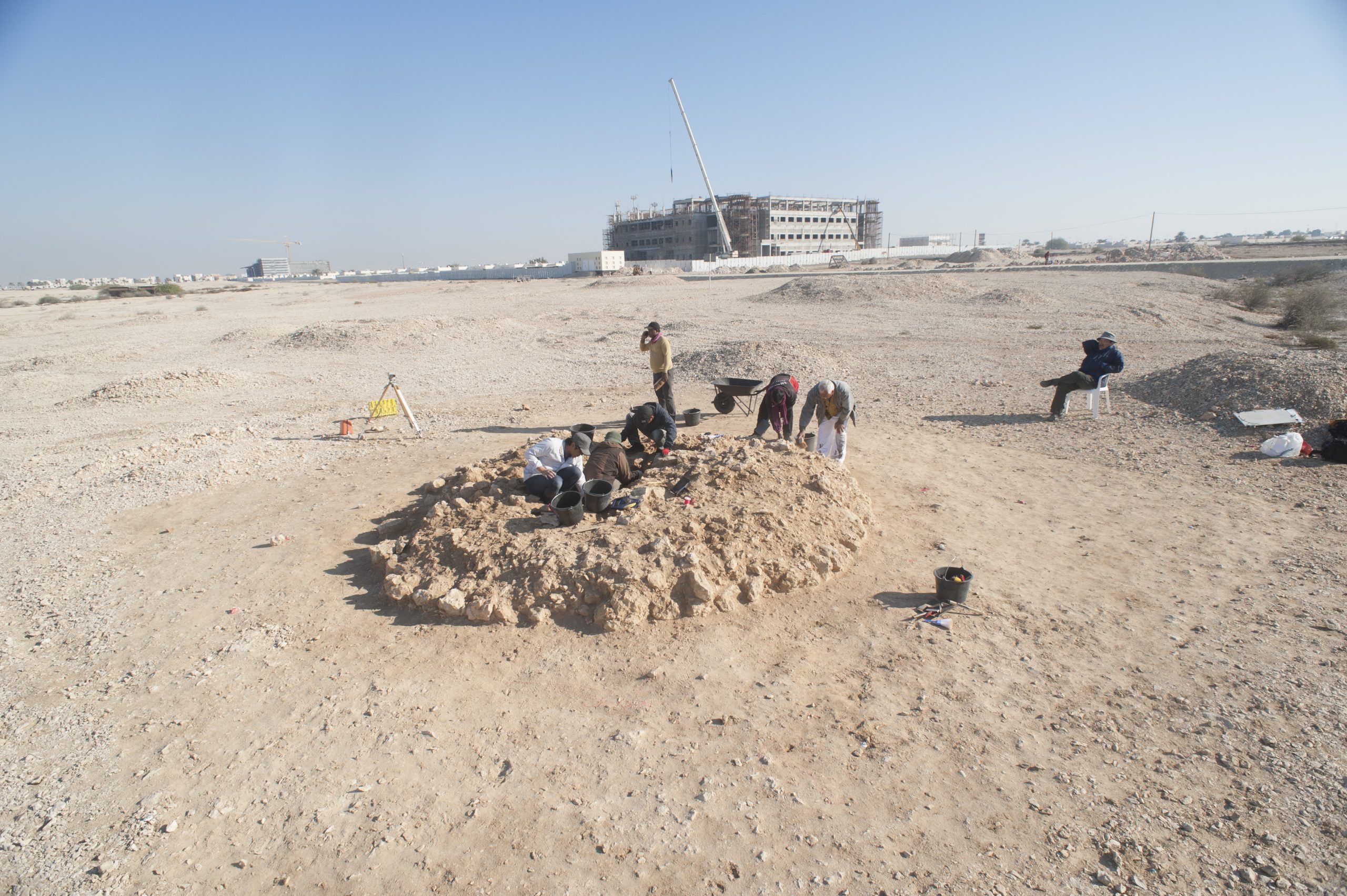
Excavation at Wadi Al-Sail
-

A special class at the Japanese School in Bahrain
-
-
A great discovery- Dilmun king "Yagli-El"
By the way, two years ago, a great discovery was made concerning Dilmun.
It has been known that Dilmun prospered from around 2000 BCE to around 1700 BCE by dominating the maritime trade linking southern Mesopotamia, Oman and the Indus.
The prosperity of Dilmun at that time is symbolized by huge burial mounds called “royal mounds,” which are located at the northern end of the Aali Burial Mounds.
Unlike most burial mounds found in Bahrain, which are rather small measuring less than 10m in diameter, more than ten big mounds are found at the northern end of the Aali Burial Mounds area which exceed 50m in diameter and 10m in height.
These are considered to be the tombs of the kings of Dilmun.
A team of Bahraini archaeologists excavated one of them (which was built around 1700 BCE) and a Danish archaeologist discovered the fragments of stone vessels with cuneiform inscriptions of the name of the buried Dilmun king “Yagli-El”.
This was indeed the first discovery of a material with an inscription of a king’s name from a big burial mound. The discovery made a sensation in the archaeological community not only because finding out a Dilmun king’s name in itself was a great discovery, but even more because the name “Yagli-El” indicated that he was an Amorite.
-
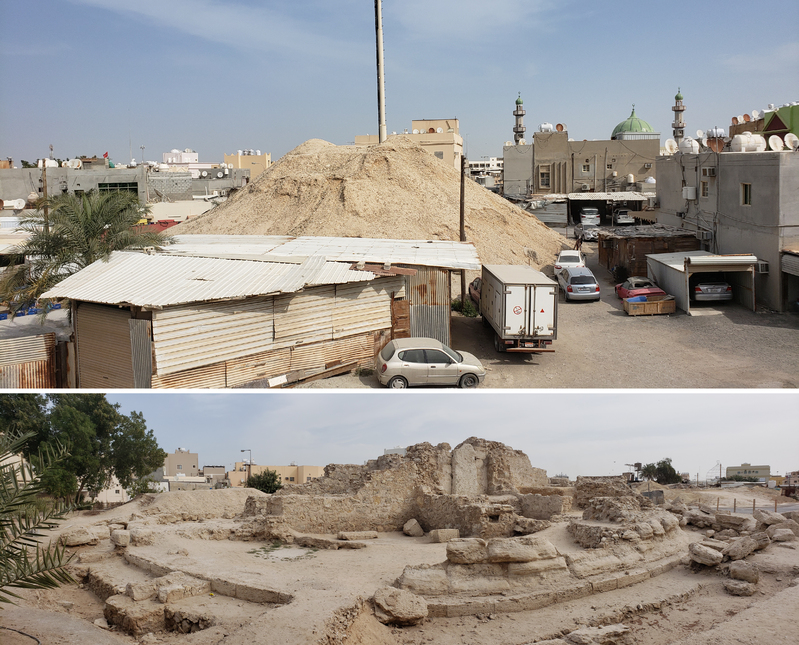
(Top)One of huge burial mounds considered to be of a royal occupant (Bottom)A royal mound excavated by the Bahrain team. The entrance to the burial chamber is locked by a huge monolith.
-
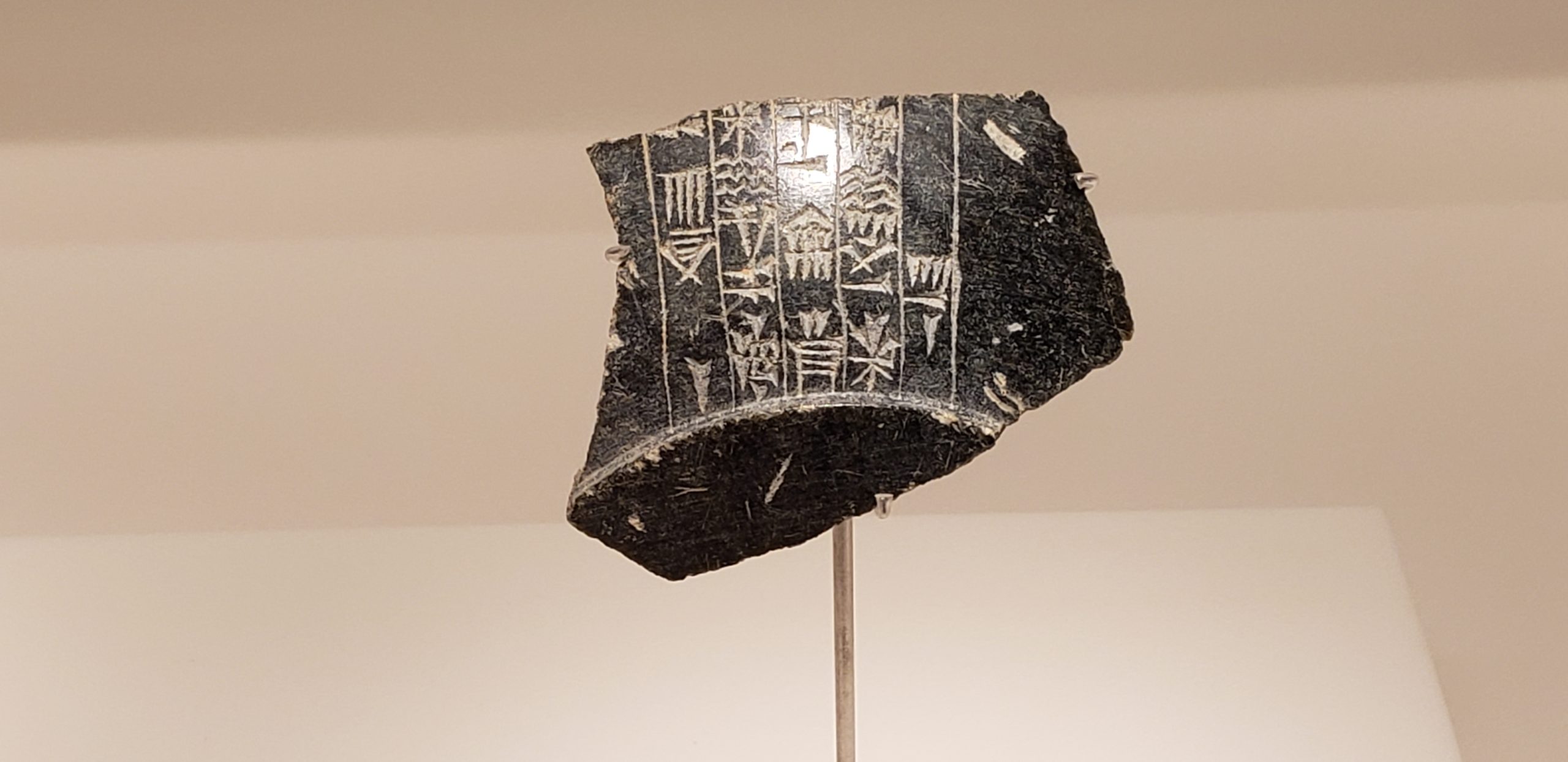
Stone vessel fragment with an inscription of a Dilmun king's name unearthed from a royal mound*
-
-
Amorites- Tribal Nomads in the Syrian Deserts
Amorites refer to tribal nomads who lived in the Syrian Deserts which spread to the west of southern Mesopotamia.
For the people of southern Mesopotamia, they were a group just like the Huns were for Chinese people, who constantly threatened their settled life.
When global aridification started around 2200 BCE, Amorites abandoned their homeland in the Syrian Deserts to move into southern Mesopotamia, armed itself and took control of the major Mesopotamian cities. We know that King Hammurabi of Babylonia, who was active around 1750 BCE and is known for establishing the Code of Hammurabi, also was an Amorite, descended from nomads living in the Syrian Deserts.
The discovery of the stone vessels carrying the inscriptions of a Dilmun king’s name of an Amorite root suggested a high possibility that Amorites migrated even into Bahrain, a land far away from southern Mesopotamia, and established a dynasty there.
-
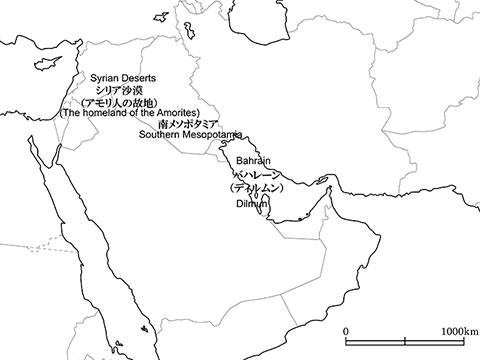
Geographical location of Bahrain
-
-
Studying Where the Founders of Dilmun Came from
It is known that Bahrain had been virtually uninhabited until around 2200 BCE. Then around 2200 BCE, people from somewhere else moved into Bahrain and began building an overwhelming number of burial mounds.
Then under the name of Dilmun, they came to dominate the maritime trade from around 2000 BCE and enjoyed great prosperity.
The Japanese team has been engaging in the archaeological investigation of Bahrain’s oldest burial mounds in Wadi as-Sail, of which construction started in this period around 2200 BCE, to elucidate where the founders of Dilmun came from.
Since people are generally conservative regarding burials and tend to maintain their old burial systems, the burial system of a certain group is usually the best resource for studying its genealogy.
Our research has revealed that burial mounds very similar to those of Wadi as -Sail are distributed widely across the Syrian Deserts, the region which is considered to be the homeland of Amorites.
Thus, the investigation by the Japanese team is providing an additional support to the hypothesis that the Dilmun dynasty was established by Amorites who came over from the Syrian Deserts.
※The director of the excavation team is Takeshi Gotoh (Tokyo National Museum) and the vice director is Kiyohide Saito (Archaeological Institute of Kashihara, Nara Prefecture)
※Titles are as of March 2019. Photographs by the author.(*) The Bahrain Authority for Culture and Antiquities kindly gave a permission to use these photographs.
-
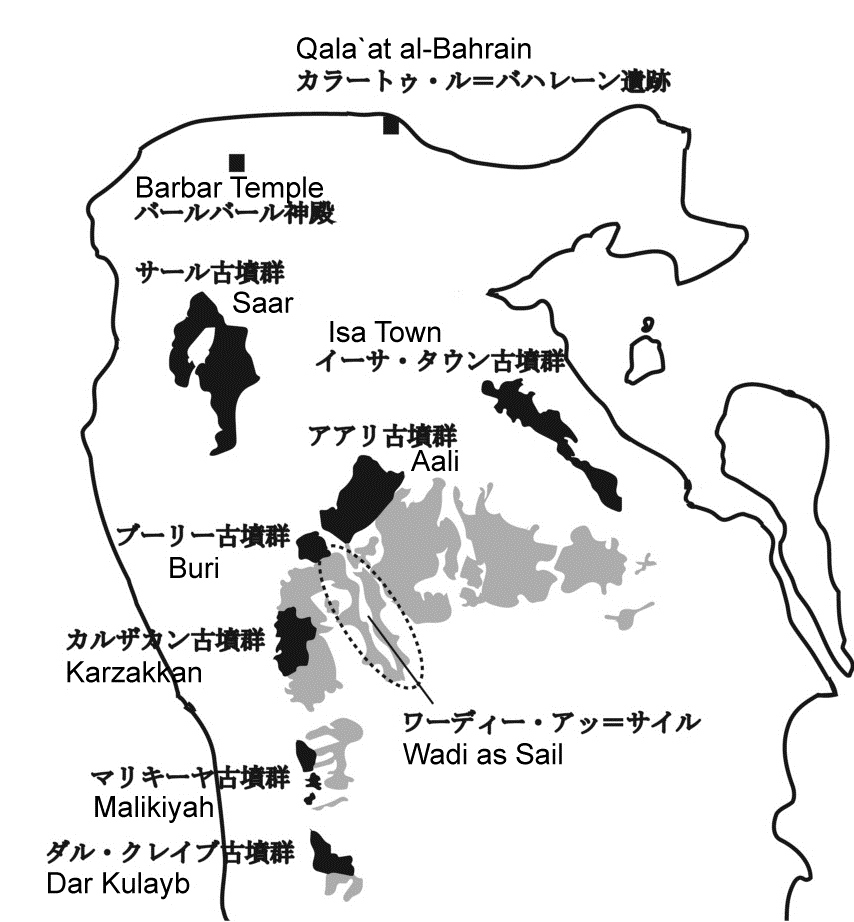
Archaeological sites in Bahrain related to Dilmun
-
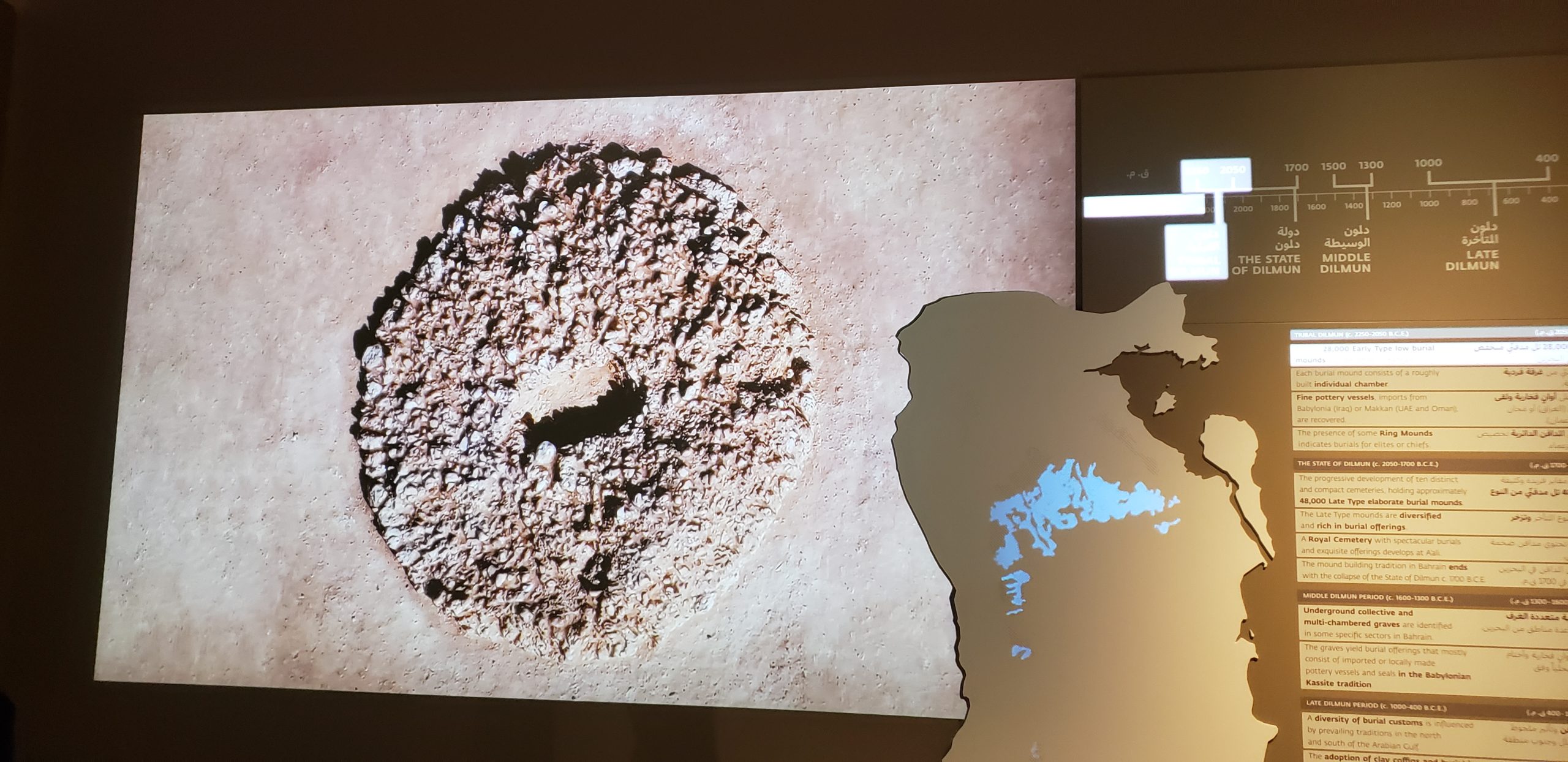
Exhibit at the Bahrain National Museum, which already include recent findings by the Japanese team*
-

